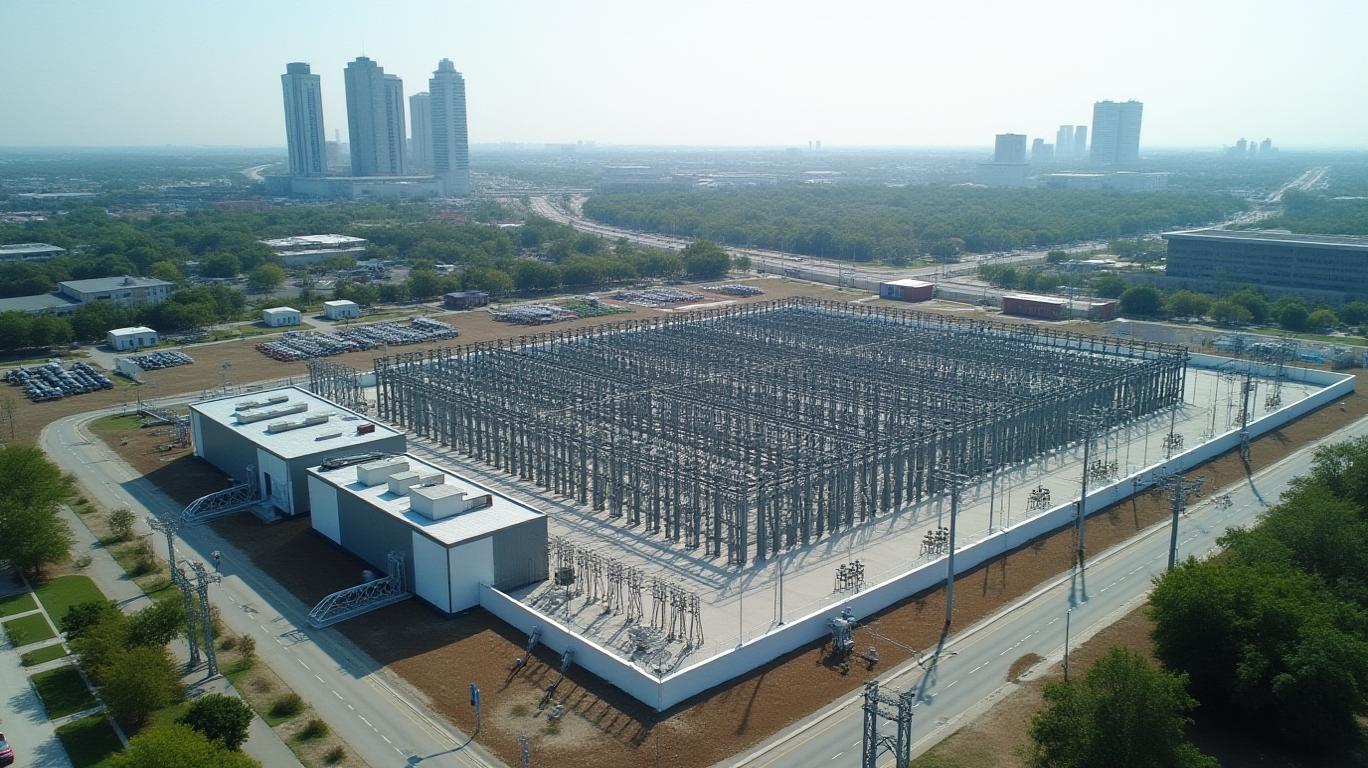Entergy's Grid Resilience: Navigating Outages to Unlock Long-Term Value
The recent Memorial Day power outages in Louisiana have thrown
(ETR) into the spotlight, testing its operational resilience and raising questions about the future of grid reliability in the U.S. While the incident underscores vulnerabilities in aging infrastructure, it also highlights Entergy's role as a critical player in the transition to a modern, sustainable energy system. For investors, this presents a compelling opportunity to assess Entergy's long-term potential through the lens of infrastructure investment—a sector increasingly vital to global energy security.
The Outage Incident: A Stress Test for Grid Reliability
On May 25, 2025, over 100,000 Entergy customers in Louisiana faced periodic power outages after the Midcontinent Independent System Operator (MISO) mandated load-shedding to prevent a catastrophic grid collapse. Triggered by a surge in electricity demand during extreme heat and a shortfall in generation capacity, the directive forced Entergy to cut power to vulnerable regions, including New Orleans and surrounding parishes. While the outage was resolved within 24 hours, it exposed three key risks:
1. Aging Infrastructure: Much of Entergy's grid predates modern reliability standards, with outdated transmission lines and equipment prone to failure.
2. Energy Transition Challenges: MISO's grid, which spans 15 states, faces capacity shortfalls due to retiring coal plants and delayed renewable energy projects, as noted by the North American Electric Reliability Corporation (NERC).
3. Communication Gaps: Customers received minimal advance notice, sparking criticism from local officials over Entergy's preparedness and transparency.
Yet the incident also revealed Entergy's strengths: compliance with MISO's directives prevented a larger disaster, and the utility's rapid restoration efforts demonstrated operational agility. For investors, this serves as a real-world stress test of Entergy's ability to navigate grid instability—a skill increasingly valuable in an era of climate volatility and energy policy shifts.
Infrastructure Vulnerabilities: A Catalyst for Investment
The outage underscores the need for grid modernization, a theme central to Entergy's strategy. The company has long prioritized infrastructure upgrades, including undergrounding power lines, replacing outdated transformers, and integrating smart grid technologies. However, progress has been slow, with critics arguing that Entergy's capital allocation has lagged behind peers like NextEra Energy (NEE).
Why Entergy's Approach Matters Now:
- Regulatory Tailwinds: Federal policies, such as the Inflation Reduction Act, incentivize utilities to invest in grid resilience and decarbonization. Entergy's focus on renewables (e.g., offshore wind partnerships) and battery storage aligns with these mandates.
- Demand for Reliability: As extreme weather events intensify, investor demand for utilities with robust infrastructure will rise. Entergy's footprint in hurricane-prone Louisiana positions it to capitalize on this trend.
- Dividend Stability: Despite the outage, Entergy's dividend yield of 3.8% (as of May 2025) remains attractive, reflecting its steady cash flows from regulated operations.
The Long-Term Case for Entergy: Infrastructure as a Growth Engine
While the Memorial Day outage highlights risks, it also underscores Entergy's opportunity to monetize infrastructure investments. Consider these factors:
1. Regulated Monopoly: Entergy operates as a regulated utility in Louisiana, ensuring stable earnings even during grid stress. Its rate base grows steadily, supported by capital projects that regulators reward with predictable returns.
2. Grid Hardening Demand: Post-outage, Louisiana officials are likely to accelerate pressure on Entergy to modernize its grid. This creates a backlog of projects that could boost earnings over the next decade.
3. Energy Transition Leadership: Entergy's shift toward renewables (e.g., its 800 MW wind project in Texas) positions it to meet state and federal clean energy mandates, reducing long-term regulatory and operational risks.
Risks and Mitigation
- Execution Risk: Entergy's success hinges on timely completion of grid upgrades. Delays or cost overruns could strain margins.
- Regulatory Headwinds: Overly aggressive rate hikes or missteps in communicating with regulators could spark backlash, as seen in New Orleans' criticism post-outage.
Mitigation Strategies:
- Public-Private Partnerships: Entergy could collaborate with federal agencies or private firms to accelerate modernization, leveraging grants and tax incentives.
- Transparent Communication: Proactive updates on grid investments and outage responses—via apps, social media, and community forums—can rebuild trust.
Conclusion: A Strategic Entry Point
Entergy's recent outage is not a death knell but a wake-up call. The utility's core strengths—regulated earnings, geographic necessity, and alignment with energy transition goals—position it to thrive if it accelerates infrastructure investments. For investors seeking exposure to grid resilience, Entergy's current valuation (P/E of 18x vs. 22x for utilities peers) offers a discount relative to its long-term potential.
The Memorial Day incident has crystallized a truth: grid reliability is no longer optional but existential. Entergy's path forward—marked by modernization, regulatory compliance, and transparency—could turn today's vulnerabilities into tomorrow's dividends. For patient investors, now is the time to position for a future where infrastructure resilience defines energy leadership.

Comments
No comments yet